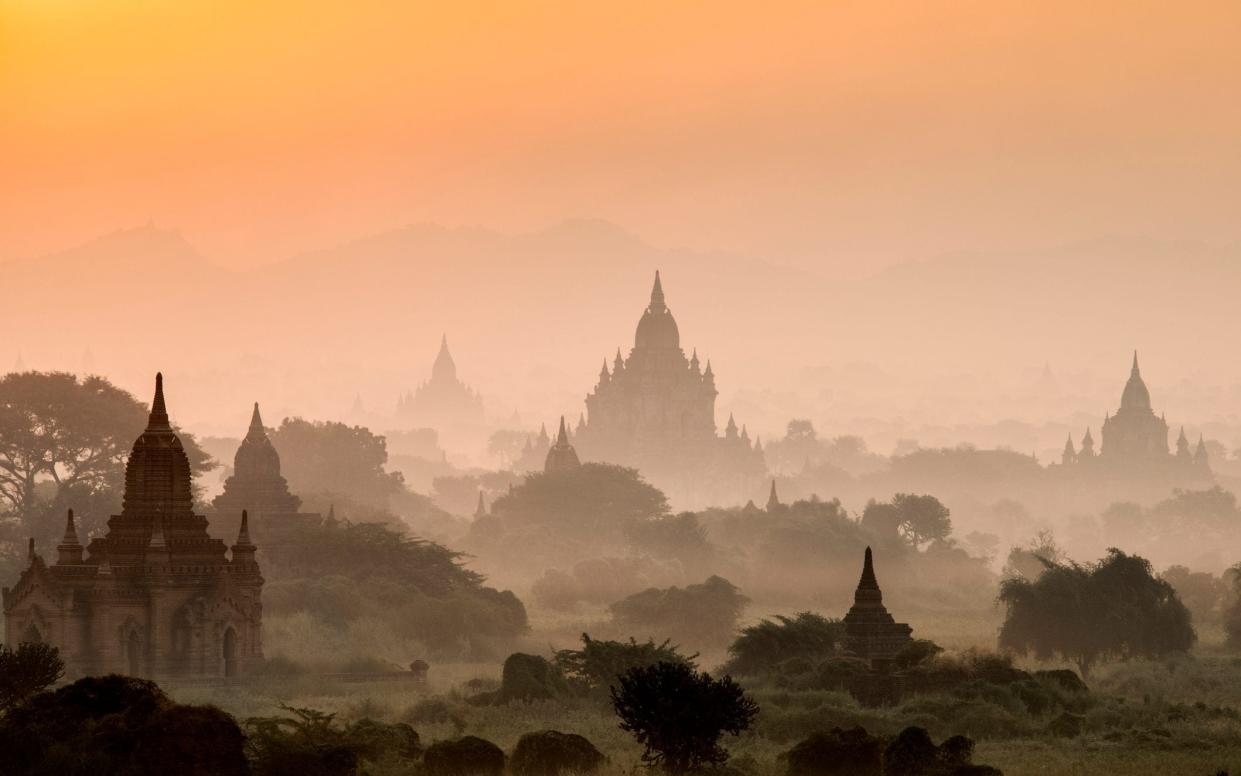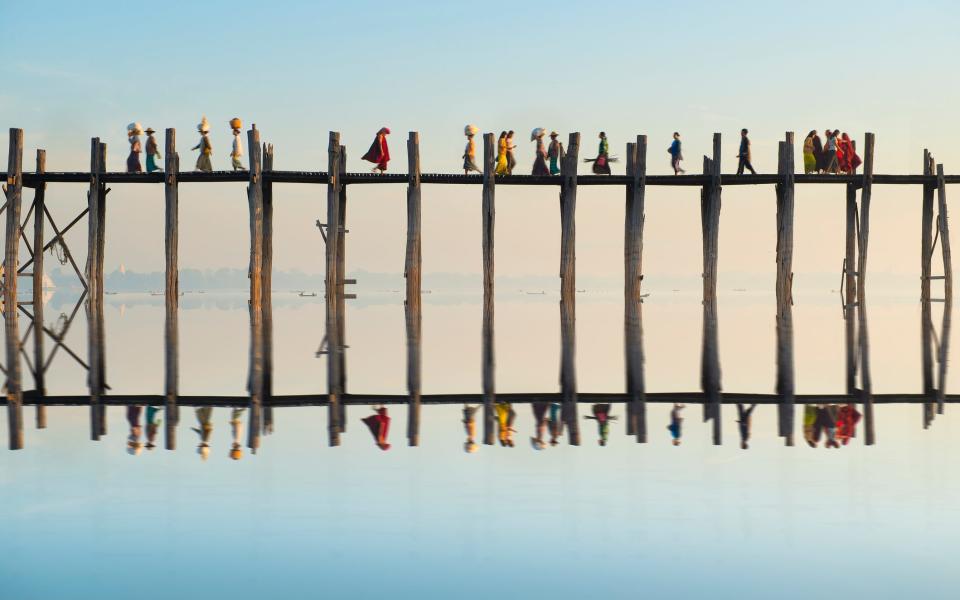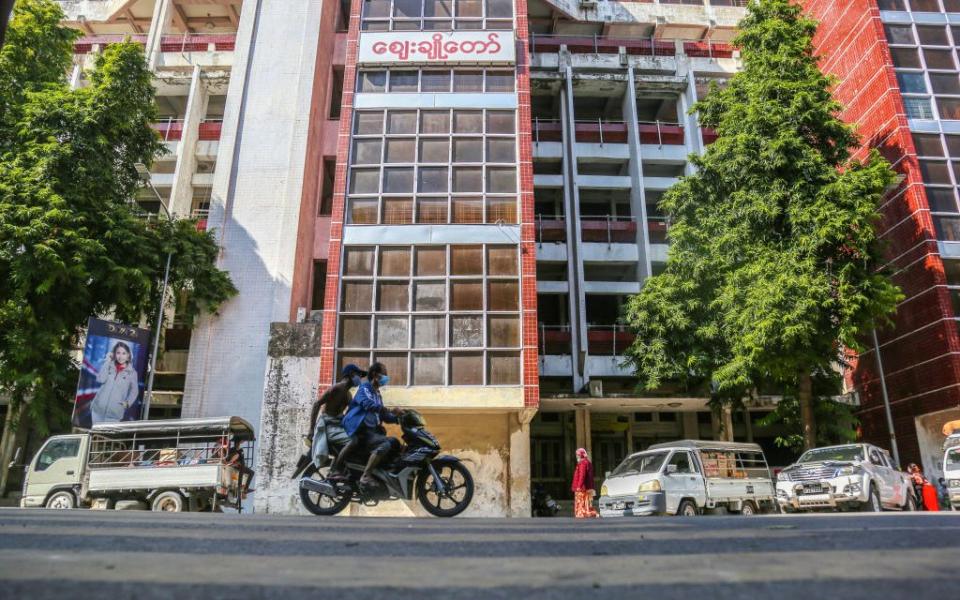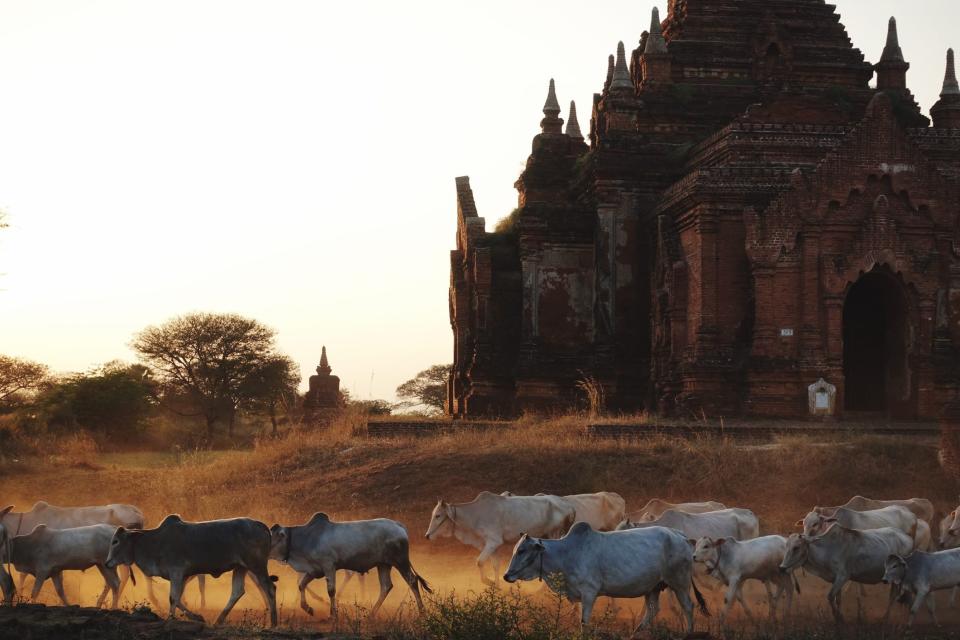Without tourists, Myanmar has travelled back in time – and its people face devastation


When the coronavirus pandemic ground tourism to a halt, a perceived silver lining was the effect this would have on the planet as nature reclaimed destinations that had before been the preserve for travellers and tour buses.
Turtles began peacefully laying eggs on Koh Samui in Thailand, shoals of fish were seen swimming in the clear water of Venice canals, and at the Golden Gate Bridge in San Francisco a nonchalant coyote was spotted strolling through a parking lot.
In Bagan, the ancient site of over a thousand temples in the centre of Myanmar, the snakes returned.
Since the last international tourists hastily departed in March, pythons and banded kraits, slowly and quietly, made their way into the dark recesses of Bagan’s pagodas, curling up behind sitting Buddhas and the murals of King Kyansitha. A Burmese python can live for up to 20 years. Some of the oldest may well remember a time when Bagan was always this quiet.
Burma – as it was known to earlier travellers – has always been regarded as off-piste. Rudyard Kipling did a whistle-stop tour in 1889. “This is Burma,” he wrote. “And it is quite unlike any land you know.” In the town of Moulmein in the south of the country he lost his heart momentarily to a “Burmese beauty” and scribbled his poem Mandalay. He described Burma as a “cleaner, greener” country of “tinkly temple-bells” conjuring an enduring image of a land lost to time.
This image was strengthened when in the 1960s a military junta took control and the country retreated behind a bamboo curtain. In the 1980s the first intrepid travellers were allowed back. Into Rangoon they explored unkempt gardens and derelict Raj-era buildings, the quiet streets thick with the smell of sandalwood and betel nut. Diesel too, and jeopardy, the sense that this was real off-the-grid travel.
By the mid-2000s Myanmar began opening up at breakneck speed. Democratic icon Aung San Suu Kyi was released from 30 years of intermittent house arrest and entered parliament to global jubilation in 2012. For a few seasons Burma was the place to visit – and even featured in a Top Gear special, with Jeremy Clarkson racing an Isuzu TX truck through the countryside past pagodas and ox-drawn carts.
Over the next five years a quarter of new jobs created was in tourism. But when Myanmar hit the news for all the wrong reasons in 2017, tourist arrivals plummeted. Work dried up for trekking guides and trishaw drivers while guesthouses and grass-root tour operators, flushed with the success of a few good seasons, had to tighten their belt.
It was only a dress rehearsal for what was to come in 2020.

In August I found myself in Mandalay, boarding the Sanctuary Ananda, the luxury cruise ship of Sanctuary Retreats. By rights, neither of us should have been there. I was supposed to be on holiday in the UK; the Ananda was scheduled to have her hull ferociously scrubbed as she dry-docked in Yangon.
As the first great wave of coronavirus infection never came to Myanmar, domestic travel opened up in June. With the primary purpose of sustaining the morale of their crew, the Sanctuary Ananda made the decision to offer cabins at rock-bottom prices to those still in the country.
While the other boats of Sanctuary Retreats sat still on the Yangtze and the Nile, the Sanctuary Ananda prepared to set sail on the Irrawaddy and the Chindwin. Excited to be out of Yangon, our giddy group of Burmese and expatriates were welcomed on board with lemongrass-scented towels and chilled banana sesame coladas. We drank Gérard Bertrand Gris Blanc Rosé of Pays d’Oc, dined on scallops and seared sea bass, and were kneaded and pampered in the Thanbyadine Spa.

But this luxury was tempered by the scenes we encountered on the banks of the river.
It is estimated that 346,000 people work directly in the travel industry in Myanmar but over 1 million make their livelihoods indirectly through tourism.
At Mingun, the mammoth unfinished pagoda that looks over the Ayeyarwaddy, a stalwart on any itinerary of Myanmar, we were greeted by a whopping gaggle of women ready to sell us scarves, fans and jade jewellery in the shape of elephants. They wouldn’t have made a sale for weeks.
A second national lockdown was on the horizon and this would put a halt to even domestic travel. The women who drive the carts at Inwa, the nearby ruins of an ancient city, bereft of an income would resort to selling their horses.
The situation was even more stark in Bagan.
Bagan, littered with hundreds of temples and pagodas, and described by Somerset Maugham as “huge, remote and mysterious, like the vague recollections of a fantastic dream”, is Myanmar’s flagship destination. And we would have it all to ourselves.
It should have been spectacular. Instead it was unsettling. In recent years the tourism industry has been built up to such an extent in Bagan that almost everyone is employed by it in some way: guides, waiters, e-bike vendors. Everyone is affected when it stops.
The news of our arrival travelled fast and as we approached the empty pagodas women appeared selling lacquerware at a quarter of its usual price. Pariah dogs, already unused to the smell of outsiders, barked lazily at us from under acacia.

Settling at a view point for sunset, a man puttered up to us on his motorbike, a gigantic grin spread over his face and a clutch of canvas paintings held under his arm. We bought his paintings and sat with him to watch the sun drop behind the temples. We were alone apart from a young couple whispering sweet nothings and three teenage boys, smoking cheroots and listening to tinny music on a phone.
As we left in the gloaming, the man with the broad smile got back upon his bike. Gone was his jubilation. Instead masked across his face was an expression of exhausted relief.
“Thank you,” he said to us. “Thank you from my family.”
“Lost in time” is a thoughtless phrased used liberally in travel brochures. Another way of putting it is “least developed”, a status the UN gave Myanmar in 1987 and one that it has ever since being trying to get away from.
Today with no tourism, without the tour buses and e-bikes, Bagan looks as lost in time as it ever did. Great for photos at sunset. Great for the snakes, too. But it is devastating for the people themselves.

Myanmar’s borders remain closed, and its government has suspended all international commercial passenger flights until at least December 31.

